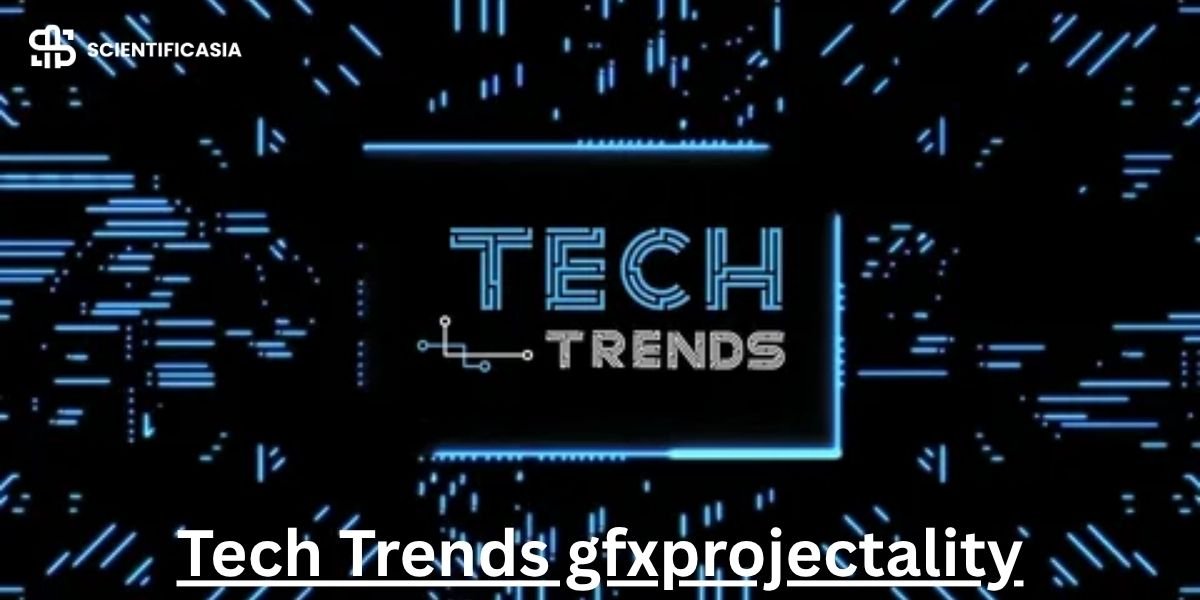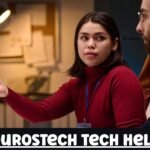Key Takeaways
- GFXProjectality merges advanced graphics with practical, outcome-driven projects, moving beyond static images.
- AI-powered rendering and real-time engines are drastically cutting down iteration times for creators.
- Sustainable tech is becoming a core concern, with energy-efficient workflows now a market differentiator.
- These trends are creating tangible impact across healthcare, education, and business, not just entertainment.
- The future demands a hybrid skill set, blending artistic vision with technical proficiency.
Introduction
What if the same revolutionary method were used to create the digital worlds in your games, the simulations used by your surgeon, and the architectural designs for your future home? This is the reality of tech trends gfxprojectality, a movement that merges the latest graphics technology with practical, project-based applications. It’s reshaping how we create, collaborate, and experience digital content. Staying ahead means understanding the key drivers—from AI and real-time rendering to sustainable design—that are setting the pace for modern digital innovation.
What Is GFXProjectality?
GFXProjectality isn’t just a buzzword; it’s a fundamental shift in visual development. The term blends “Graphics” with “Projectality,” emphasizing a focus on tangible, project-oriented outcomes over abstract art. At its core, it’s a discipline that treats complex visual assets as manageable, collaborative projects from conception to deployment.
My perspective, shaped by following tools like Unreal Engine 5’s meteoric rise, is that this type of work represents the industrialization of creativity. It’s the framework that allows a small indie studio to produce cinema-quality visuals or a medical firm to create an interactive 3D model of a heart for presurgical planning. The evolution is clear: we’ve moved from solitary artists to integrated teams using sophisticated project management and version control systems built directly into their creative suites.
Key Tech Trends Driving GFXProjectality
AI and Real-Time 3D Rendering
AI is no longer a futuristic concept; it’s a production assistant. Tools like NVIDIA’s Canvas allow artists to paint landscapes with simple brushes, which AI instantly converts into photorealistic environments. This, combined with real-time rendering engines, means the days of waiting hours for a single frame are over. Artists can now see final-quality lighting and textures in real time, making creative iteration faster and more intuitive than ever.
AR/VR and Immersive Environments
The demand for immersive experiences is exploding beyond gaming. I see major retailers using AR for virtual try-ons and corporations using VR for global team meetings in a shared digital space. These aren’t gimmicks. A recent PwC report found that VR trainees learned up to four times faster than in a classroom. This trend is pushing GFXProjectality to create not just visuals, but believable, interactive spaces.
Cloud Collaboration & Digital Twins
Cloud platforms are the great equalizer. A designer in Tokyo can now work seamlessly on the same 3D model as an engineer in New York. This functionality is critical for developing “digital twins”—virtual replicas of physical assets. Companies like Siemens are using this approach for everything from factory optimization to city planning, requiring a GFXProjectality mindset to build and maintain these complex, data-rich models.
Blockchain, NFTs & Interactive Graphics
While the NFT market has cooled, the underlying technology has forced a crucial conversation about digital ownership and provenance. Here, GFXProjectality comes into play by generating tokenized, unique, high-value, and often interactive 3D assets. It has enabled artists to directly monetize their digital work, thereby establishing a new economic layer for creators.
Sustainable Design Technologies
The carbon footprint of digital creation is a real concern. A render farm’s energy consumption is substantial. The industry is responding with green solutions. For instance, Sheffield’s “The Grid” is a carbon-negative render farm. Furthermore, software optimizations in engines like Unity are reducing processing power needs, making sustainable design both an ethical and a smart business practice.
Tools, Platforms & Creative Applications
Popular Digital Creation Tools
The toolbox for modern creators is more powerful and accessible than ever.
- Blender: A powerhouse open-source 3D suite that has democratized high-end creation.
- Unreal Engine 5: Its Nanite and Lumen technologies are redefining realism in real-time.
- Substance 3D: The industry standard for creating and applying detailed, realistic materials.
Design Thinking for Modern Creators
Success now hinges on a human-centered design thinking approach. It’s not enough to master software; you must solve a user’s problem. This means prototyping early, testing with real users, and iterating based on feedback. The most successful GFXProjectality projects are those that are as usable and intuitive as they are visually stunning.
Online Collaboration Ecosystems
The era of the isolated artist is over. Platforms like Figma for design and Miro for brainstorming have created ecosystems where feedback is immediate and iterative. For 3D work, cloud-based project management is becoming integrated directly into DCCs (Digital Content Creation apps), ensuring that a 100-artist team works as one cohesive unit.
Industry Use Cases and Real-World Impact
Education
Interactive 3D models and VR field trips are turning passive learning into an engaging experience. Students can dissect a virtual frog or walk through ancient Rome, improving knowledge retention dramatically.
Healthcare
Surgeons use patient-specific 3D anatomical models from CT scans to practice complex procedures, reducing operating time and risk. This practical application of GFXProjectality is directly improving patient outcomes.
Entertainment
This is the most visible sector. From the virtual production stages used in The Mandalorian to open-world video games, these technologies allow for richer, more immersive storytelling at a scale previously unimaginable.
Business & Startups
Startups use real-time engines to create compelling product visualizations and interactive demos for investors. Architectural firms create virtual walkthroughs, allowing clients to experience a building before the foundation is even poured.
Business, Workforce & Global Impact
Companies that adapt are integrating technical artists into core strategy teams. The demand for “T-shaped” professionals—deep in one skill (like modeling) but literate in many others (like lighting or coding)—is soaring. This is reshaping the global job market, creating opportunities in regions with strong digital infrastructure. The global impact is a more visually literate and connected world, where high-fidelity digital communication becomes the norm, breaking down geographical and linguistic barriers in design and innovation.
Future Outlook for GFXProjectality
I anticipate a move towards more generative and AI-co-authored content, where creators direct an AI rather than manually crafting every asset. The biggest opportunity for enterprises lies in real-time data visualization—turning complex data streams into intuitive, interactive 3D dashboards. The primary challenge will be the ethical use of Artificial Intelligence and data privacy within immersive spaces. The solution will be a combination of robust, transparent ethical guidelines and the development of new digital rights management (DRM) frameworks for the 3D web.
Actionable Tips for Creators and Businesses
Best Practices: Focus on the fundamentals of art theory; they are the foundation upon which all technology is built. Never stop learning—dedicate time each week to exploring a new tool or technique.
Strategic Implementation: Businesses should run small-scale pilot projects to demonstrate value. Creators should build a strong, niche-specific portfolio that tells a story of problem-solving, not just asset creation.
Sustainability Considerations: Choose cloud providers with a stated commitment to renewable energy. Optimize your digital assets (geometry, texture resolution) to be as efficient as possible, reducing render times and energy use.
FAQs
Q: What is the most valuable skill for getting into GFXProjectality?
A: Beyond technical skill, learnability. The tools change fast, so the ability to quickly adapt and master new software is the most durable asset you can have.
Q: How is this different from VFX or graphic design?
A: VFX is a subset of this field, often focused solely on film. GFXProjectality is a broader methodology applied across industries, from architecture to engineering, with a heavy emphasis on interactivity and real-time application.
Q: Is the high cost of hardware a barrier to entry?
A: While powerful hardware helps, cloud-based workstations and rendering are making it possible to use standard computers for complex projects, significantly lowering the barrier.
Q: How important is coding knowledge?
A: It’s increasingly valuable. You don’t need to be a full-time programmer, but understanding basic scripting (like Python) for automation or simple shader code can massively boost your efficiency and marketability.
Conclusion
The powerful convergence of tools and techniques under the umbrella of tech trends gfxprojectality, is rewriting the landscape of digital creation. This isn’t a passing trend but a fundamental evolution in how we build and interact with the digital layer of our world. For creators and businesses alike, embracing this integrated, forward-thinking approach is no longer optional—it’s the key to leading the next wave of modern digital innovation.











